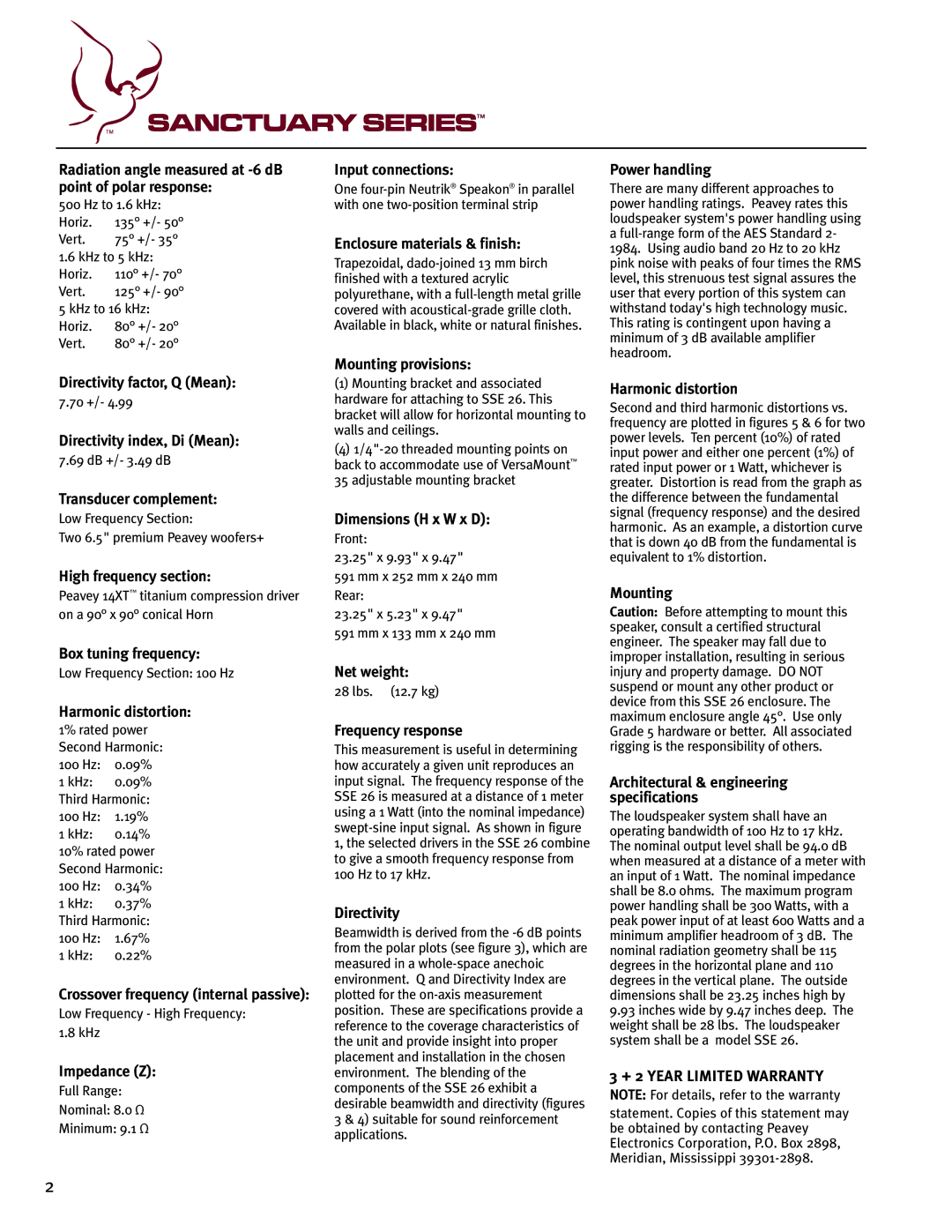SSE 26 specifications
The Peavey SSE 26 is a remarkable addition to the world of professional audio equipment, specifically designed for sound engineers and musicians seeking high-quality performance and reliability. As a part of Peavey's commitment to innovation, the SSE 26 incorporates advanced technologies and features that cater to both live and studio settings.One of the standout features of the SSE 26 is its dual 6.5-inch low-frequency drivers, which deliver punchy bass response while maintaining clarity across the sound spectrum. This is complemented by the integrated 1-inch compression driver that allows for smooth high-frequency reproduction. The combination of these components makes the SSE 26 capable of producing a well-balanced audio output that satisfies even the most discerning audiophiles.
The enclosure design is another key characteristic of the SSE 26. Constructed from durable plywood, the cabinet is designed to minimize resonance and distortion, ensuring that sound fidelity is preserved. Additionally, the cabinet features a robust black finish and a perforated steel grille that not only enhances its visual appeal but also protects the drivers from potential damage during transport or usage.
Equipped with Peavey's proprietary SonicGuard technology, the SSE 26 provides built-in protection against excessive power levels. This technology helps prevent distortion and damage to the speakers, making it a reliable choice for high-energy performances and extended sessions of use.
Connectivity options of the SSE 26 include standard speakON and 1/4-inch input/output jacks, making it versatile and easy to integrate into various sound systems. The speakers are also designed for use in passive or bi-amped configurations, providing flexibility for users who require specific audio setups.
Another notable aspect of the SSE 26 is its portability. With a manageable weight and compact size, it is easy to transport, making it an excellent choice for gigging musicians and mobile sound engineers.
In conclusion, the Peavey SSE 26 stands out in the realm of professional audio equipment thanks to its powerful drivers, durable construction, advanced protection features, and versatile connectivity. This speaker is designed not only to meet the demands of live performance but also to deliver studio-quality sound, making it an ideal choice for a wide range of applications. Whether you’re performing on stage or recording in a studio, the SSE 26 promises to be a valuable asset in any audio setup.

